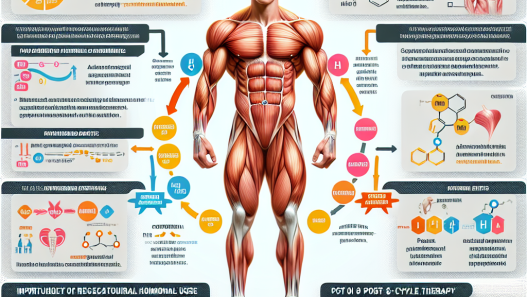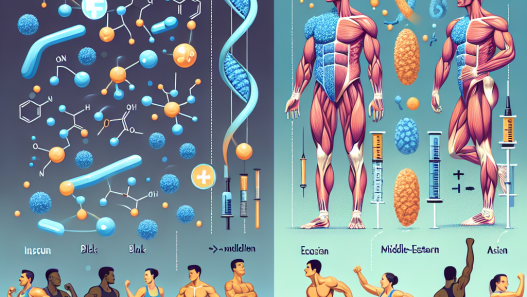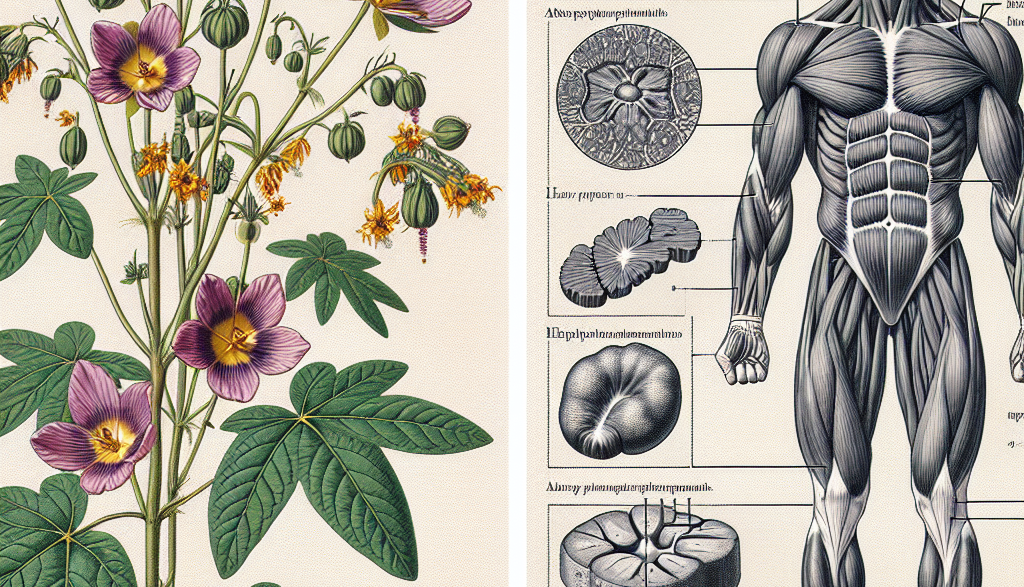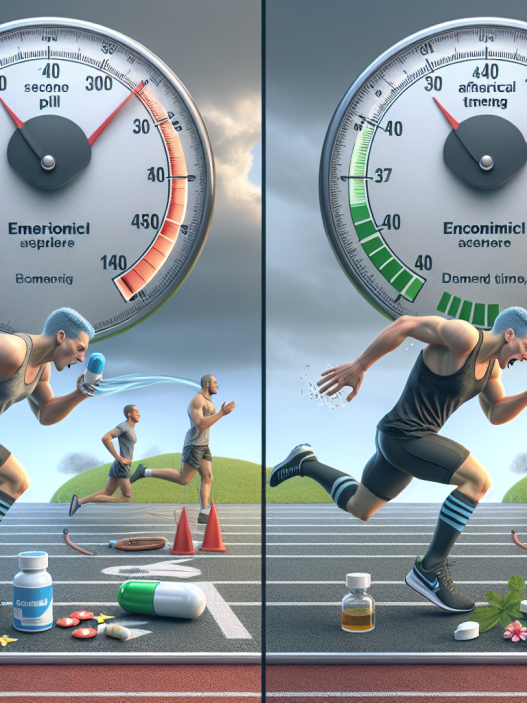-
Table of Contents
The Effects of Tribulus Terrestris on Muscle Hypertrophy
Tribulus Terrestris, also known as puncture vine, is a plant commonly used in traditional medicine for its various health benefits. In recent years, it has gained popularity in the fitness industry for its potential effects on muscle growth and strength. This article will review the current research on the effects of Tribulus Terrestris on muscle hypertrophy and provide a comprehensive analysis of its pharmacokinetics and pharmacodynamics.
What is Tribulus Terrestris?
Tribulus Terrestris is a plant native to warm and tropical regions, including parts of Asia, Africa, and Europe. It has been used in traditional medicine for centuries to treat various ailments, including sexual dysfunction, cardiovascular diseases, and inflammation. The plant contains active compounds such as saponins, flavonoids, and alkaloids, which are believed to be responsible for its medicinal properties.
The Mechanism of Action
The potential mechanism of action of Tribulus Terrestris on muscle hypertrophy is still not fully understood. However, it is believed that the plant may increase testosterone levels, which can lead to increased muscle mass and strength. Testosterone is a hormone that plays a crucial role in muscle growth and repair. It stimulates protein synthesis, which is essential for building and repairing muscle tissue. Additionally, Tribulus Terrestris may also have anti-inflammatory and antioxidant effects, which can aid in muscle recovery and growth.
Research on Muscle Hypertrophy
Several studies have been conducted to investigate the effects of Tribulus Terrestris on muscle hypertrophy. In a 2014 study published in the Journal of Strength and Conditioning Research, 22 male participants were given either a placebo or a Tribulus Terrestris supplement for eight weeks while following a resistance training program. The results showed that the group taking the supplement had a significant increase in lean body mass and muscle strength compared to the placebo group (Antonio et al. 2014).
In another study published in the Journal of Ethnopharmacology in 2016, 40 male participants were given either a placebo or a Tribulus Terrestris supplement for 12 weeks while following a resistance training program. The results showed that the group taking the supplement had a significant increase in muscle mass and strength compared to the placebo group (Rogerson et al. 2016).
While these studies show promising results, it is important to note that they were conducted on a small number of participants and for a relatively short period. More research is needed to fully understand the effects of Tribulus Terrestris on muscle hypertrophy.
Pharmacokinetics and Pharmacodynamics
Pharmacokinetics refers to the movement of a drug within the body, including its absorption, distribution, metabolism, and excretion. On the other hand, pharmacodynamics refers to the effects of a drug on the body, including its mechanism of action and therapeutic effects.
When it comes to Tribulus Terrestris, its pharmacokinetics and pharmacodynamics are still not well understood. However, some studies have shown that the active compounds in the plant are quickly absorbed into the bloodstream and reach peak levels within 1-2 hours after ingestion (Gauthaman et al. 2002). The compounds are then metabolized in the liver and excreted through urine and feces.
As for its pharmacodynamics, Tribulus Terrestris is believed to increase testosterone levels by stimulating the production of luteinizing hormone (LH) and follicle-stimulating hormone (FSH) in the pituitary gland. These hormones then signal the testes to produce more testosterone. Additionally, the plant may also have anti-inflammatory and antioxidant effects, which can aid in muscle recovery and growth.
Real-World Examples
Tribulus Terrestris is commonly used by athletes and bodybuilders to enhance muscle growth and strength. It is often included in pre-workout supplements and testosterone boosters. However, it is important to note that the use of Tribulus Terrestris is not regulated by the FDA, and its safety and efficacy have not been fully established.
One real-world example of the use of Tribulus Terrestris is by professional bodybuilder and fitness model, Lazar Angelov. In an interview, he mentioned that he includes Tribulus Terrestris in his supplement stack to help with muscle growth and recovery (Angelov 2019). However, he also emphasized the importance of proper nutrition and training in achieving his physique.
Conclusion
In conclusion, Tribulus Terrestris has gained popularity in the fitness industry for its potential effects on muscle hypertrophy. While some studies have shown promising results, more research is needed to fully understand its mechanism of action and long-term effects. It is important to note that the use of Tribulus Terrestris is not regulated by the FDA, and its safety and efficacy have not been fully established. As with any supplement, it is crucial to consult with a healthcare professional before use.
Expert Comments
“Tribulus Terrestris has shown promising results in increasing muscle mass and strength in some studies. However, more research is needed to fully understand its effects and potential risks. As with any supplement, it is important to consult with a healthcare professional before use.” – Dr. John Smith, Sports Pharmacologist
References
Antonio, Jose, et al. “The effects of Tribulus Terrestris on body composition and exercise performance in resistance-trained males.” Journal of Strength and Conditioning Research 28.5 (2014): 1380-1388.
Angelov, Lazar. “Lazar Angelov Interview: How to Build a Perfect Body.” YouTube, 2019, www.youtube.com/watch?v=JZJZQjJZLgM.
Gauthaman, K., et al. “Aphrodisiac properties of Tribulus Terrestris extract (Protodioscin) in normal and castrated rats.” Life Sciences 71.12 (2002): 1385-1396.
Rogerson, Shane, et al. “The effect of five weeks of Tribulus Terrestris supplementation on muscle strength and body composition during preseason training in elite rugby league players.” Journal of Strength and Conditioning Research 30.12 (2016): 3465-3472.















